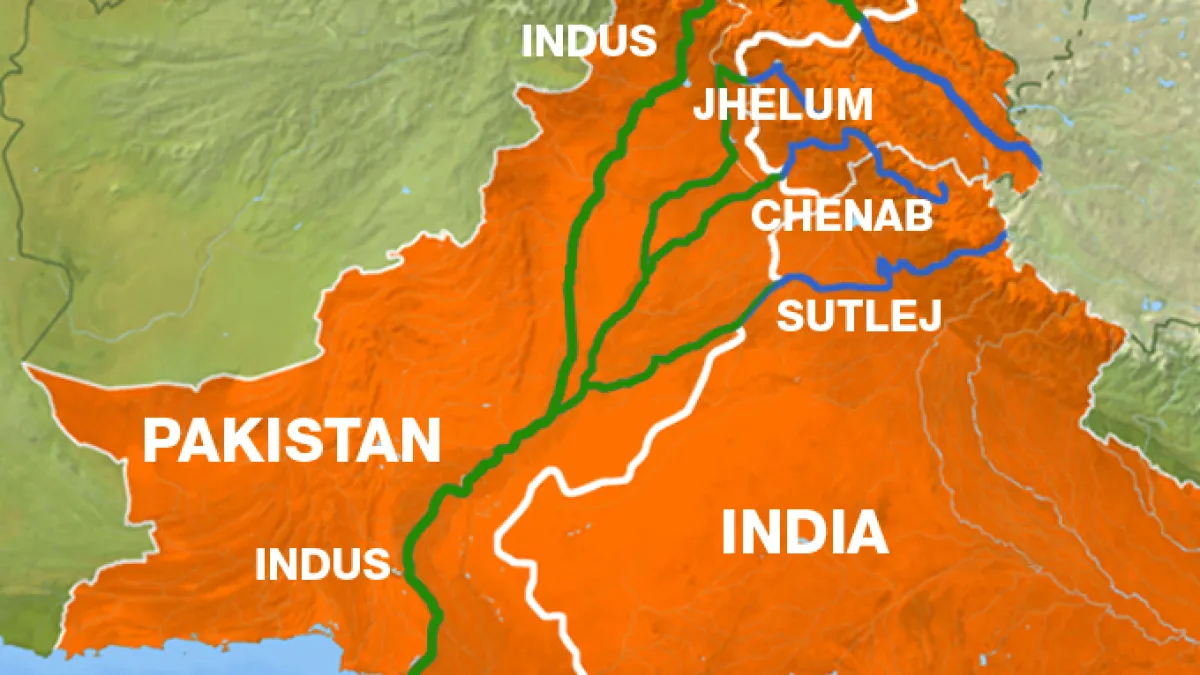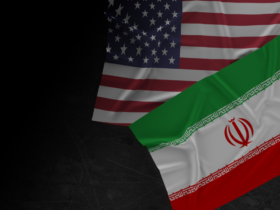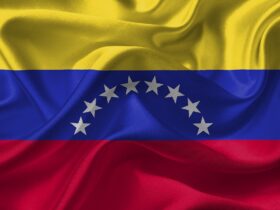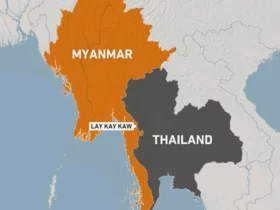As political brinkmanship escalates after Kashmir’s tragedy, the real victims may be the rivers we drink from, the crops we rely on, and the air we breathe.
As political brinkmanship escalates after Kashmir’s tragedy, the real victims may be the rivers we drink from, the crops we rely on, and the air we breathe.
by Dure Akram, from Lahore / Pakistan
The Baisaran Valley, Kashmir, should have been a place of laughter. Instead, it became a killing ground. On April 22, tourists were gunned down at point-blank range in a massacre that stunned Kashmir. Reports of families fleeing for shelter as armed militants separated men from women and children, killing them in cold blood sent shockwaves across the subcontinent. But in the hours that followed, it wasn’t truth or justice that shaped India’s response. It was blame.
The tragedy soon metastasized into something even more dangerous. Within hours, India’s Home Minister named “Pakistan-based militants” as culprits. No evidence, no investigation, just instinctive scapegoating.
Pakistan, in sharp contrast, called for a neutral inquiry, offering full cooperation to find the truth. But the truth, it seems, was irrelevant.
In every Indo-Pak flashpoint, accusations precede autopsies. Facts are treated as afterthoughts. Justice is sacrificed for political optics.
Weaponizing water
Then came the escalation that stunned even seasoned diplomats: On April 24, India suspended the Indus Waters Treaty: a move so reckless it risks destabilizing not just Pakistan, but India itself.
This 63-year-old treaty is not some diplomatic nicety; it is a cornerstone of survival. It has weathered wars, near-conflicts, and decades of distrust. Weaponizing water — turning rivers into ammunition — crosses a line no South Asian government had dared cross before.
Pakistan’s former ambassador to the UN and US, Maleeha Lodhi, put it plainly: “To suspend the treaty is to hold regional stability hostage.” And hostage it now is.
Already, the damage is spreading:
• India has halted river-flow data crucial for flood control.
• Annual water meetings have been cancelled.
• Pakistan’s irrigation planning has been thrown into chaos.
And this, just as the Indus–our agricultural lifeline–suffers from Himalayan glacier decline and record-low snowpack.
The timing could not be worse. Pakistan’s farms, powered by centuries-old canal networks, are calibrated to Indus water flows.
The situation is particularly dire in Punjab, the agricultural heartland of the country. Missing even a few days’ worth of flows means missing sowing windows, driving up groundwater reliance, worsening salinity, and crippling food security.
“We are already seeing missing discharges,” says Dewan Iftikhar a farmer in central Punjab. “The crops will die before they even sprout.” The consequent widespread over-extraction of groundwater is not only unsustainable but would greatly exacerbate the long-term problem of soil salinization, threatening the very foundation of Punjab’s agricultural productivity.
Climate science leaves no room for doubt. Himalayan snowpack, the lifeblood of the Indus, is at a 23-year low, with summer meltwater reduced by over 50%. Floods are more violent, and droughts more frequent.
Every environmentalist worth his salt is shouting at the top of his voice: The Indus cannot absorb political games. It is already stretched to the breaking point.
This is no longer about political rivalry. It is about survival.
Effects on Pakistan
Without reliable water, Pakistan’s wheat, rice, and cotton crops, the pillars of food and economic security, face collapse. Without sowing, there is no harvest. Without harvest, there is no food. Food riots are not science fiction. They are a historical certainty when agriculture collapses.
In this darkening landscape, Chief Minister Maryam Nawaz Sharif’s call for “climate diplomacy” last October was a lone voice of sanity.
She proposed cooperation to tackle smog, a cross-border killer that cares nothing for nationalism. Punjab government has also been at the forefront of efforts to revive cross-border cultural ties, most notably through the Kartarpur Corridor, which facilitates visa-free access for Sikh pilgrims to one of their holiest shrines in Pakistan. It is in this context that we must analyze the stark contrast with which New Delhi is treading. The last few days have seen India downgrade diplomatic ties, suspend bilateral sports, end visa-free travel for special recognized classes, and constantly engage in increased cross-border firing along the Line of Control. Even at the time of filing this piece, headlines screamed a similar attack near the Line of Control near Rawalakot, Pakistan.
Predictably, Indian politicians routinely mock these ideas. Haryana Chief Minister Bhagwant Mann, for instance, quipped that smog “moves in a circle,” and mocked the proposal as naïve. Quite predictably, Delhi’s air turned toxic weeks later, grounding flights and shutting down schools as AQI levels soared past 400.
Smog doesn’t carry passports. Neither does drought. Neither does famine.
This is the bitter irony. The elements we share, air, water and seasons, are indifferent to our politics. And unless we rethink this trajectory fast, they will punish us all without mercy.
Pakistani position
Pakistan’s position is clear and rational:
First, we demand an internationally supervised investigation into Pahalgam not for political theatre, but because truth is the only antidote to endless escalation.
Second, India must immediately resume cooperation under the IWT; starting with technical-level talks on flood and drought forecasting.
Even a white paper by someone as patriotic as Sri Krishna Kumar, a former Indian bureaucrat and water policy expert quips, “We need not (and cannot) stop water flowing into Pakistan and earn a bad name as an irresponsible nation in addition to running risk of drowning ourselves.”
Third, we must launch a South Asia Climate Water Forum: a platform for real cooperation, focused on adaptation, agriculture, glacial monitoring, and shared survival.
Fourth, track-two channels–researchers, water engineers, and universities– must be empowered to keep collaboration alive even when politicians fail.
All this neither denies the existence of hawkish elements in Pakistan nor proclaims that no work needs to be done on our side of the border to ensure a transparent, highly accountable mechanism when it comes to alleged connections with militancy.
However, all said and done, if New Delhi’s gamble succeeds, if weaponizing water becomes normalized, then this won’t stop with Pakistan.
It will spiral across the region and crops will fail; cities will face rolling blackouts and food inflation will stoke political fires no government can easily contain.
Today it is our farmers scrambling for water. Tomorrow it will be India’s. The Indus doesn’t need a visa to unleash devastation on both sides.
The United World’s readers–and the world–must confront an urgent question:
Are we willing to live in a world where water and air (the building blocks of life itself) are twisted into weapons of destruction?
Or will we finally accept what the rivers, the glaciers, and the smog have been trying to teach us all along: Cooperation is not charity. It is survival.
The next harvest may well be our last chance.
Cover graphic by Al Jazeera

















Leave a Reply